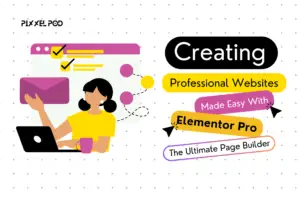Table of Contents
ToggleLast Updated on December 29, 2024 by Admin
Meta is doubling down on its efforts to ensure that its virtual reality platform, Horizon Worlds, remains both engaging and safe for its growing community. As part of this mission, Meta has introduced new ‘Mature’ content classifications to give creators more control over the type of experiences they offer while helping users navigate and choose worlds that align with their preferences and comfort levels.
In this blog post, we’ll explore the details of these classifications, their implications for creators and users, and what this means for the future of content moderation in virtual reality.
What are ‘Mature’ Content Classifications?
The new ‘Mature’ content classifications are guidelines designed to help creators tag their worlds appropriately based on the content they contain. This classification system introduces a more nuanced approach to content labeling, ensuring that users are informed about what to expect before entering a virtual environment.
Key Features of the Classification System:
- Age-Appropriate Labeling
- Creators can designate their worlds as suitable for adults by labeling them as ‘Mature.’
- This helps Meta maintain its commitment to creating a safe space for users of all ages.
- Content Transparency
- Users can now make more informed decisions about which worlds to explore based on explicit content descriptions.
- Better Moderation
- The system aids Meta’s moderation efforts by clearly defining the boundaries of acceptable content within ‘Mature’ worlds.
What Qualifies as ‘Mature’ Content?
Meta’s guidelines outline specific categories that fall under the ‘Mature’ classification. These include:
- Sexual Content
- Non-explicit discussions or depictions of relationships or romantic interactions that might not be suitable for younger audiences.
- Violence
- Mildly graphic depictions of combat or scenarios that may involve conflict but stop short of extreme gore or horror.
- Substance Use
- Depictions or discussions of alcohol, tobacco, or other substances.
- Strong Language
- Use of language that may not be appropriate for all audiences.
Creators must adhere to these guidelines to ensure that their worlds are accurately labeled, helping Meta maintain a balance between creative freedom and community safety.
Implications for Creators
For creators, the introduction of ‘Mature’ classifications represents both a responsibility and an opportunity:
- Enhanced Creative Freedom
- Creators can now explore themes and narratives aimed at adult audiences without fear of their content being mislabeled or flagged inappropriately.
- Audience Segmentation
- Proper labeling allows creators to attract their intended audience while minimizing the risk of negative feedback from users who prefer family-friendly content.
- Compliance and Trust
- By following the classification guidelines, creators contribute to a safer and more transparent platform, fostering trust among users and Meta alike.
Implications for Users
For users, the new system offers:
- Informed Choices
- Users can preview content classifications and decide whether a world aligns with their interests and comfort levels.
- Personalized Experiences
- The classification system enables users to curate their virtual reality experience by filtering worlds that meet their preferences.
- Improved Safety
- Parents and guardians of younger users can more easily monitor and control the types of experiences their children encounter.
The Bigger Picture: Meta’s Approach to Moderation
The addition of ‘Mature’ content classifications underscores Meta’s commitment to proactive content moderation. This move aligns with broader efforts in the tech industry to create safer and more inclusive digital environments. By giving creators and users tools to manage content boundaries, Meta is taking a step toward minimizing harmful interactions and enhancing user satisfaction.
Challenges to Address:
- Consistent Enforcement: Ensuring that all creators comply with the classification system will require robust monitoring and clear communication.
- Evolving Definitions: As virtual reality grows, Meta will need to update its guidelines to address new content trends and challenges.
Conclusion
Meta’s introduction of ‘Mature’ content classifications for Horizon Worlds is a welcome development for both creators and users. By offering a structured way to label and navigate content, Meta is paving the way for a safer, more transparent, and more engaging virtual reality ecosystem.
As the metaverse continues to expand, such initiatives will play a crucial role in balancing creative freedom with community trust. Whether you’re a creator designing immersive worlds or a user exploring the horizons of virtual reality, these classifications will help make Horizon Worlds a better space for everyone.







